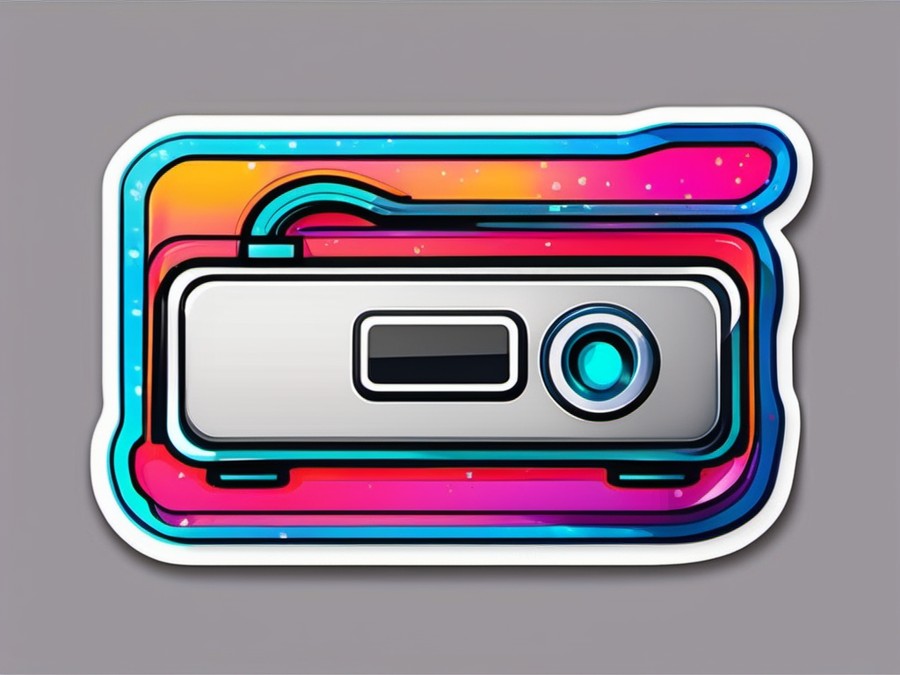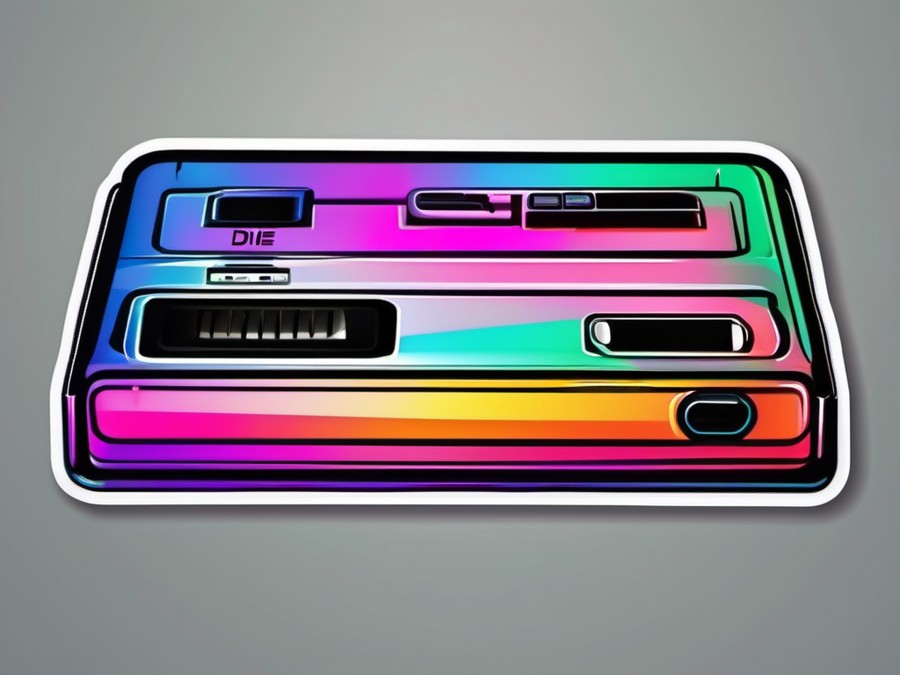· Charlotte Will · Docking Stations · 7 min read
What is a Docking Station with HDMI Output and Its Benefits?
Discover the benefits and use cases of a docking station with HDMI output for enhancing your productivity, gaming, and overall tech experience. Learn how to set up and choose the right docking station for your needs.

Have you ever wished you could turn your laptop into a full-fledged desktop computer with just one cable? A docking station with HDMI output can make that dream a reality. In this article, we’ll explore what a docking station is, the benefits of using one with HDMI output, and how to choose the right one for your needs.
Understanding Docking Stations with HDMI Output
What is a Docking Station?
A docking station is a device that allows you to connect your laptop or tablet to various peripherals and displays with just one cable. It’s a port replicator that expands the functionality of your device, turning it into a more powerful and versatile machine.
The Role of HDMI in Docking Stations
HDMI, or High-Definition Multimedia Interface, is a type of connection that can transmit both video and audio signals. In the context of docking stations, HDMI is crucial for connecting your device to external monitors. This allows you to extend or mirror your display, providing more screen real estate for tasks like multitasking, presentations, or gaming.
Different Types of Docking Stations
Docking stations come in various types, each with its own set of features. Some common types include:
- USB-C Docking Stations: These are popular for their versatility and speed. They can handle data transfer, power delivery, and video output through a single USB-C connection. Learn more about them in our article on What is a USB-C Docking Station and Why Do You Need One?.
- Thunderbolt Docking Stations: These offer even faster data transfer speeds and can support more high-resolution displays.
- Portable Docking Stations: These are great for those who need to work on the go. Discover their use cases in our article on What is a Portable Docking Station and Its Use Cases?.
Benefits of Using a Docking Station with HDMI Output
Enhanced Display Capabilities
One of the primary benefits of a docking station with HDMI output is its ability to support multiple monitors. This can significantly improve your productivity by allowing you to open multiple windows side by side. For instance, you could have your email client open on one monitor while working on a document on another.
Improved Workflow and Productivity
A docking station can streamline your task management by keeping all your peripherals connected and ready to use. This can be particularly beneficial for remote workers, as it can help create a more comfortable and productive workspace. If you’re interested in other products that can improve your remote work setup, check out our article on What is a Laptop Stand and Its Benefits for Remote Workers?.
Seamless Integration of Peripherals
With a docking station, you can connect all your peripherals—keyboard, mouse, external hard drive, and more—with just one cable. This not only reduces cable clutter but also makes it easy to switch between different setups or locations.
Improved Video Quality
HDMI output supports high-quality video, including 4K resolution. This can be a game-changer for everything from watching movies to giving presentations. The clear, sharp images can help you make a better impression and provide a more immersive experience.
Versatility in Use
Docking stations with HDMI output can be used in a variety of settings, from home offices to professional conference rooms. They’re also great for gaming, as they can provide a more immersive experience by connecting to a larger screen.
How Docking Stations with HDMI Output Work
Connectivity Options
A docking station typically comes with a variety of ports, including HDMI, USB, Ethernet, and sometimes even SD card slots. These ports allow you to connect to various devices and displays.
Data Transfer Speeds
The speed of data transfer is an important consideration when choosing a docking station. Faster speeds mean you can transfer large files more quickly and enjoy smoother streaming and gaming experiences.
Power Delivery
Many docking stations also provide power delivery, which means they can charge your laptop while it’s connected. This is particularly useful if you’re using your laptop for tasks that require a lot of processing power.
Setting Up a Docking Station with HDMI Output
Step-by-Step Guide to Setup
Setting up a docking station is typically straightforward. Here are the general steps:
- Plug in your docking station: Connect it to a power source.
- Connect your peripherals: Plug in your keyboard, mouse, external hard drive, etc., into the appropriate ports on the docking station.
- Connect your laptop: Use the provided cable (often USB-C or Thunderbolt) to connect your laptop to the docking station.
- Connect your monitor: Use an HDMI cable to connect your monitor to the docking station.
- Configure settings: Your laptop should automatically detect the new peripherals and displays. You may need to adjust your display settings to Extend or Mirror your screens.
Troubleshooting Common Issues
If you’re having trouble with your HDMI output, here are a few things to check:
- Ensure all cables are securely connected.
- Try using a different HDMI cable or port.
- Restart your computer and docking station.
- Update your graphics drivers.
Real-World Examples of HDMI Docking Station Use
Home Office Setup
A docking station can greatly enhance your home office setup. By connecting a large monitor or multiple monitors, you can create a more comfortable and productive workspace. You can also connect other peripherals like a printer or scanner to further streamline your workflow.
Gaming with an HDMI Docking Station
For gamers, a docking station can provide a more immersive experience by connecting to a larger screen. This can be particularly beneficial for PC gamers who want to use their laptop for gaming but prefer the larger screen of a desktop monitor.
Professional Presentations
A docking station can also be incredibly useful for giving professional presentations. By connecting to a large monitor or projector, you can display your slides in high-quality, ensuring that everyone in the room can see clearly.
Choosing the Right Docking Station for Your Needs
Key Features to Look For
When choosing a docking station, consider the following features:
- Number of ports: Make sure it has enough ports for all your peripherals.
- Data transfer speed: Faster speeds mean smoother performance.
- Power delivery: This can be a lifesaver if you’re doing intensive tasks.
- Compatibility: Ensure it’s compatible with your laptop or tablet.
Top-Rated HDMI Docking Stations
There are many great docking stations on the market. Some top-rated options include:
- Dell WD19TB: This is a popular choice known for its fast data transfer speeds and high-quality video output.
- CalDigit TS3 Plus: This docking station is known for its versatility and ability to support multiple high-resolution displays.
Considerations for Different Budgets
If you’re on a tight budget, there are still plenty of great options available. However, keep in mind that cheaper docking stations may have fewer ports or slower data transfer speeds. If you’re looking for a more affordable option, consider checking out our article on What is a Portable USB Hub and What are Its Benefits?.
On the other hand, if you’re willing to invest more in a high-end docking station, you can enjoy faster speeds, better video quality, and more versatile connectivity options.
Conclusion
A docking station with HDMI output can be a game-changer for your productivity, connectivity, and overall user experience. Whether you’re a remote worker, a gamer, or a professional giving presentations, a docking station can help you get more out of your laptop or tablet. So why wait? Start exploring the world of docking stations today and see how they can transform your tech setup.
FAQs
Q1: Can I use a docking station with an older laptop?
Yes, many docking stations are designed to be compatible with a wide range of laptops and tablets. However, you should always check the specifications to ensure compatibility with your device.
Q2: How many monitors can I connect using an HDMI docking station?
This depends on the docking station. Some can support multiple monitors, while others may only support one or two. Always check the specifications before purchasing.
Q3: Are HDMI docking stations suitable for MacBook users?
Yes, there are many HDMI docking stations that are compatible with MacBooks. However, you should always check the specifications to ensure compatibility.
Q4: What should I do if the HDMI output isn’t working?
If your HDMI output isn’t working, try the following steps:
- Ensure all cables are securely connected.
- Try using a different HDMI cable or port.
- Restart your computer and docking station.
- Update your graphics drivers.
Q5: Can I use a docking station for both work and entertainment?
Absolutely! Docking stations are incredibly versatile. They can be used for both work and entertainment purposes, from giving presentations to watching movies or gaming. The key is to choose a docking station that fits your specific needs and preferences.
By following these guidelines and using the provided links for internal linking, you can create a high-quality, engaging, and SEO-optimized article that thoroughly covers the topic.




